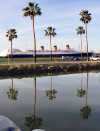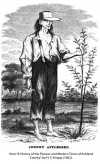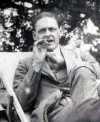.jpg) The son of a Florentine banker, Cosimo de’ Medici was an able financier who vastly expanded the family’s banking business. In 1433, he was banished from the city by a rival family but returned a year later. With the support of the people, he became the first of the Medici family to rule Florence. He sought a balance of power among the Italian states and made his power as little felt as possible. He was also a noted patron of scholarship and the arts. What celebrated sculptor did he support? Discuss
The son of a Florentine banker, Cosimo de’ Medici was an able financier who vastly expanded the family’s banking business. In 1433, he was banished from the city by a rival family but returned a year later. With the support of the people, he became the first of the Medici family to rule Florence. He sought a balance of power among the Italian states and made his power as little felt as possible. He was also a noted patron of scholarship and the arts. What celebrated sculptor did he support? Discuss
Source: The Free Dictionary
 Construction on the Queen Mary ocean liner began in Scotland in 1930. In 1934, British King George V’s consort, Queen Mary, christened the ship in her own name. Operated by the Cunard Line, the glamorous luxury ship carried passengers between New York and England for decades—except during World War II, when it was painted grey and converted to carry troops. In the 1960s, air travel rendered transatlantic passenger ships obsolete, and the Queen Mary was retired. Where is it now?
Construction on the Queen Mary ocean liner began in Scotland in 1930. In 1934, British King George V’s consort, Queen Mary, christened the ship in her own name. Operated by the Cunard Line, the glamorous luxury ship carried passengers between New York and England for decades—except during World War II, when it was painted grey and converted to carry troops. In the 1960s, air travel rendered transatlantic passenger ships obsolete, and the Queen Mary was retired. Where is it now?  John Chapman—better known as
John Chapman—better known as  Eliot was an American-British poet and critic and an immensely distinguished literary figure who, from the 1920s on, was the most influential English-language modernist poet. His early poems, such as “The Love Song of J. Alfred Prufrock” and “The Waste Land,” express the anguish and barrenness of modern life and the isolation of the individual. In his later poetry, he turned from spiritual desolation to hope for human salvation. What book by Eliot is the basis for the musical Cats?
Eliot was an American-British poet and critic and an immensely distinguished literary figure who, from the 1920s on, was the most influential English-language modernist poet. His early poems, such as “The Love Song of J. Alfred Prufrock” and “The Waste Land,” express the anguish and barrenness of modern life and the isolation of the individual. In his later poetry, he turned from spiritual desolation to hope for human salvation. What book by Eliot is the basis for the musical Cats?  Educated as a chemist, Sergey Prokudin-Gorsky devoted himself to the development of early color photography. By taking rapid sequences of monochrome photos through different colored filters and overlaying them, he was able to reconstruct original color scenes. Around 1905, he set out to document the Russian Empire and went on to capture vivid portraits of a lost world—the nation on the eve of World War I and the coming Russian revolution. What did Tsar Nicholas II give him to aid in the project?
Educated as a chemist, Sergey Prokudin-Gorsky devoted himself to the development of early color photography. By taking rapid sequences of monochrome photos through different colored filters and overlaying them, he was able to reconstruct original color scenes. Around 1905, he set out to document the Russian Empire and went on to capture vivid portraits of a lost world—the nation on the eve of World War I and the coming Russian revolution. What did Tsar Nicholas II give him to aid in the project?